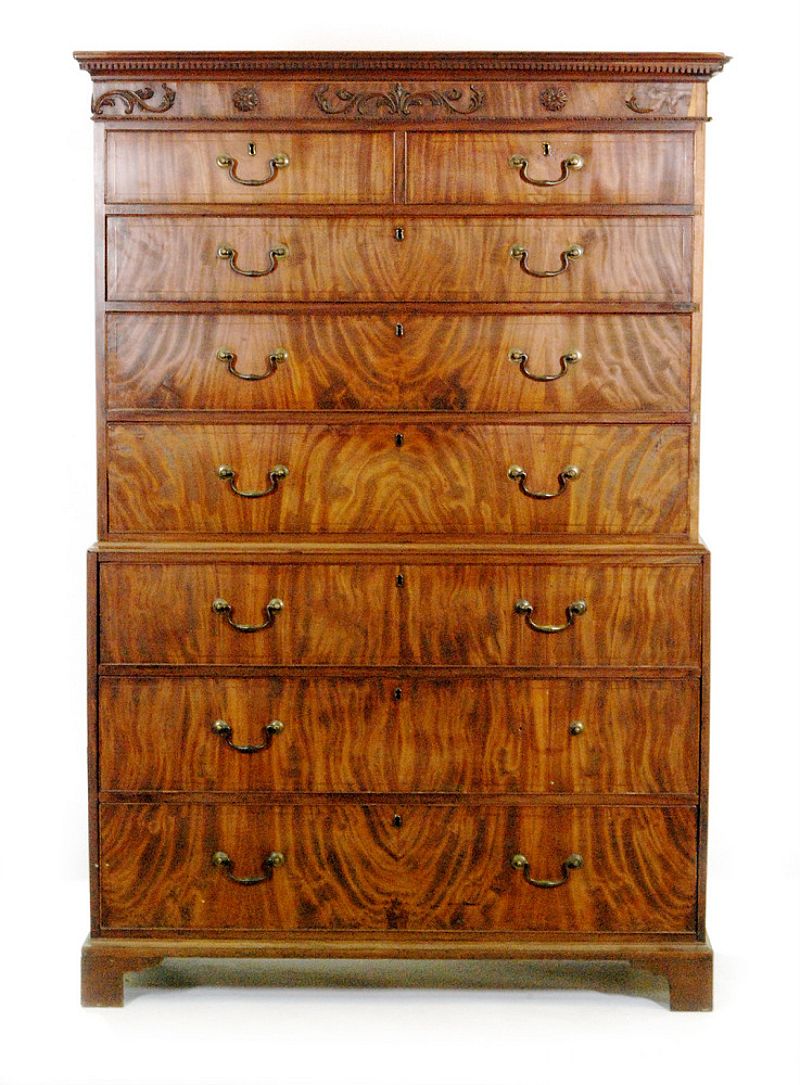Georgian Furniture - A buyer's guide
Georgian furniture has never been such good value and with prices sure to rise, now’s the time to buy
Think of Georgian furniture and instantly you picture large, sturdy pieces combining simplicity of line with exquisite materials and unparalleled craftsmanship……and the price tag? Expensive? Well think again. While post war and shabby chic have become ever more expensive, Georgian furniture has never been so affordable.
So with over 100 years of design and a multitude of things on offer how do you pick your way through the look of a century? Here’s the outline of the Georgian style…
Early Georgian
In the Early Georgian period attempts were made to improve earlier designs mainly from the Queen Ann period, simple shapes already popular were altered, embellished and improved upon. However possibly the most significant development that occurred in the reigns of George I and George II was the replacement of walnut by mahogany.
Mahogany rapidly won favour among cabinetmakers being very strong, long lasting and having a close grain. Mahogany was also less prone to infestation, didn't scratch, crack, or warp or need varnishing, and its dark reddish colour suited the design temperament of the day.
Common items included side tables, especially pier tables, usually with marble tops, chairs with shells and legs graced with fish-scaled scrolls, as well as bookcases and gilt mirrors.
Mid Georgian
The taste of the early Georgian period in 18th century England was never widely popular and suffered from being quite expensive for ordinary furnishing needs.
In the middle of the eighteenth century Chippendale published his “Gentleman’s and Cabinetmakers Director” which cemented the Rococo style of interior decoration in England. By 1762 Chippendale produced the third edition of the “Director” this time catering to popular crazes for Gothic and Chinese designs, as well as Rococo furniture, and also later in his career made neo-classical furniture more associated with the Georgian period.
Late Georgian
From about the time of George the third's accession to the throne, 1760, a reaction set in against the overbearing Palladian style, and the curvy and vivacious Rococo style designs of the preceding early and mid Georgian eras known as Neoclassicism, most associated with the designers Adam, Hepplewhite, and Sheraton.
These designers spawned thousands of lookalikes, many of which can be found today across salerooms and antique shops. The types of furniture produced reflected the leisure pursuits of this newly affluent set, card playing, elegant dinner parties, taking tea and building book collections.
The acquisition of a piece of Georgian furniture marks the acquisition of not only a reliable friend but an heirloom for future generations.
If you wish to discuss buying or selling with our furniture specialist, please contact Andy Mayall.
Posted on 24 November 2020
Be in the know
Sign up for auction email alerts so you never miss another sale at Fieldings!
Register now




